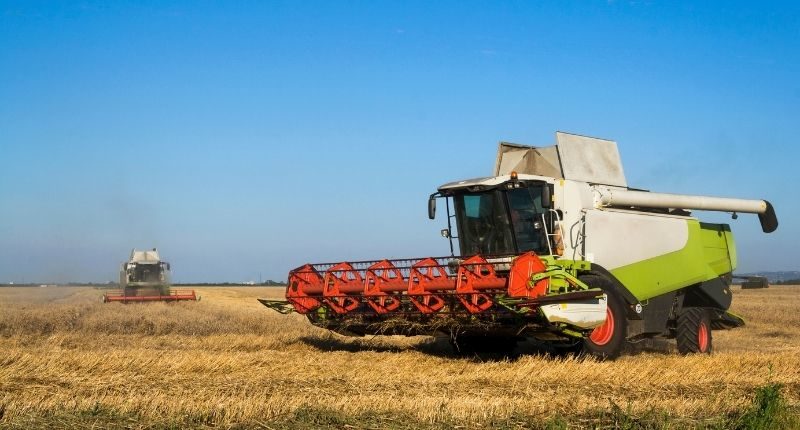- Low interest rates drove the propensity to buy, similar to other sectors
- Trade tension, lack of workers, and other factors made some farming uneconomical
- Some of the rural experience was very similar to other real estate sectors
The rural real estate sector seems to be up against just as complex and multifaceted a challenge as its residential and other commercial counterparts.
While a common factor includes either low interest rates, or changing interest rates in more recent times, rural properties have seen the most curious ups and downs: while rainfall has been considerable.
In some areas it has been too much leading to poorer quality crops, in other cases, excellent seasons have been met with low export demand.
Add to the above supply chain issues in multiple forms, and you have in some instances, growers leaving fruit on the vine because it is no longer economical to sell.
Let alone the issue of insufficient labour to pick fruit, as was well publicised on the news more broadly.
Southern NSW
In Herron Todd White‘s latest Month in Review for March 2022, Southern NSW farmers found the clouds delivered rain, it was a tad too generous.
Herron Todd White Valuer Andrew Garnsey wrote “Despite the prolonged wet harvest, the rural property market in southern New South Wales in early 2022 is still showing signs of heightened demand.”
Mr Garnsey noted that despite the lower quality in grains and legumes, owing to the wet harvest, “high yields and favourable feed grains prices have meant most operators have had at least an average cash return in 2021.”
Those historically high grain prices will lead to the rural property outlook remaining very positive, Mr Garnsey added.
Among other good news for the region, the prime lamb market continues to be profitable, and the current low interest rate environment bodes well for rural real estate in the area.
Having said that, Mr Garnsey wrote “… tightening of lending as potential interest rate rises are factored in by the banks…” was one issue to consider this year, alongside continuing supply chain issues, Covid, and international tensions.
Mildura
Three main factors seem to have been affecting Mildura. Herron Todd White Directors Shane Noonan and Graeme Whyte said they were a challenging export market, irrigation water, and credit.
Horticulture is heavily reliant on export markets, wrote Mr Noonan and Mr Whyte, with multiple global factors including trade tensions, tariffs, and exchange rates, significantly affecting returns for some produce.
The escalation of trade tensions with China have left many vineyards high and dry, exports for Australian wine and table grapes were significantly impacted.
“Wineries are understood to be carrying large inventories from the 2021 vintage and with a weak export outlook, will be forced to reduce their intake in the current season.”
Shane Noonan and Graeme Whyte, Directors, Herron Todd White
“Pricing as low as $250 per tonne is being quoted and growers are expecting that some fruit will be left on the vine. The full impact this will have on grower sentiment remains to be seen, however it is disheartening for growers to witness a sudden decline after many years of gradual price improvement,” said Mr Noonan and Mr Whyte.
Supply chain issues arising from Covid has also hampered the industry, table grape growers are also “… braced for a below average season with the main issues being the lack of available refrigerated containers, shipping space, increased shipping costs, and associated delays along with a shortage of workers.”
On the up side, Mr Noonan and Mr Whyte noted very good rainfall across the Murray catchment.
Like many other parts of the real estate sector, low interest rates throughout the pandemic gave farmers the confidence to acquire new properties or expand farms.
Similarly, the hesitancy around rate hikes is also visible in the rural real estate sector.
Western Australia
What trends have been observed? It’s tough to tell, wrote Herron Todd White Valuer Luke Russell.
“Whilst almost all agricultural localities in the wheatbelt, Mid-West, SouthWest and Great Southern regions have achieved capital growth in the previous 12 to 18 months, the relatively low number of transactions has made it difficult to pinpoint exactly what kind of growth has occurred.”
Luke Russell, Valuer, Herron Todd White
Some areas were highly sought after, and prices climbed dramatically.
Mr Russell took the example of Pingrup, which saw several properties sell within the order of $2,500 per arable hectare. In November 2020, price were floating around $1,000 to $1,500 per arable hectare.
Low interest rates, high grain prices, and high confidence from a record season in the state were some of the factors driving the price up dramatically, Mr Russell wrote “… the key component behind the surge in pricing appears to be low supply.”
It seemed a simple equation: great conditions, great quality came together with scarcity, something all too familiar across other sectors of real estate.








